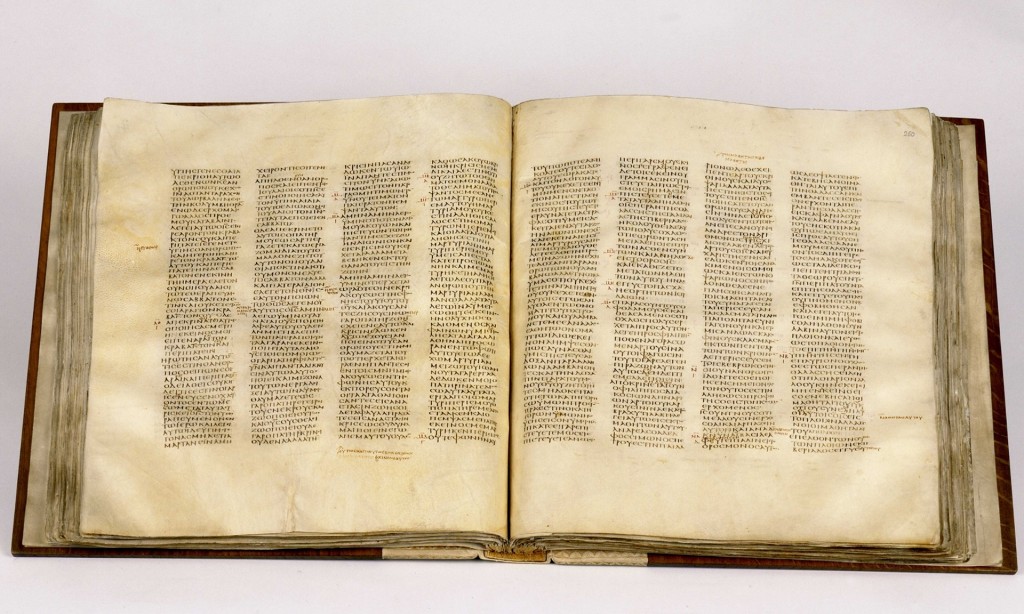For only the second time since the British Library obtained the Codex Sinaiticus in the 1930’s, it is being lent out. It will be on display at the British Museum as part of their upcoming Exhibit Egypt: Faith after the Pharaohs.
The Codex Sinaiticus was written in the Fourth Century, and was kept for many years at St Catherine’s monastery in Egypt’s Sinai desert.
From the Guardian:
What is particularly fascinating about the codex are the 27,000 corrections in it. “This is a very beautiful and fine book, but it also has all this activity going on its margins and between lines, all over the place really,” he added.
Experts now believe the codex was the work of four scribes, evocatively known as A, B1, B2 and D (the existence of a C has now been disproved by modern scholars).
The codex is considered one of the world’s greatest written treasures and was the prototype for every subsequent Christian Bible. Since 2009, the complete and transcribed book can be consulted by anyone online because of a collaboration between the four institutions that hold different parts of the manuscript –the British Library, the Monastery of St Catherine on Mount Sinai, the University Library of Leipzig and the National Library of Russia, St Petersburg.

